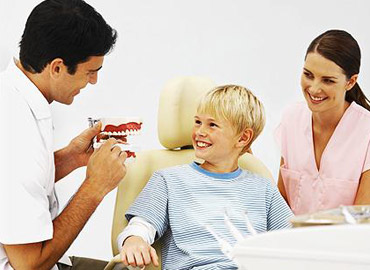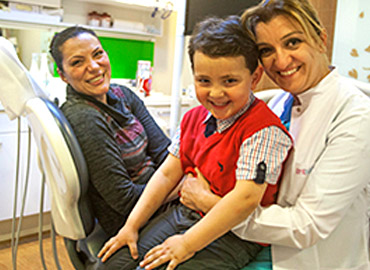Pedodontia, also known as Pediatric Dentistry, protects the health of the dairy and permanent teeth of children...

Pediatric Dentistry, also known as Pediatric Dentistry, is the main science that aims to protect the health of the dairy and permanent teeth of children 0-14 years old and treat the diseases that occur.
All necessary dental treatments are applied by pedodontists to healthy and handicapped children. Especially in dental treatment of children under 4 years, children with long treatment duration and obstacles with growth retardation, general anesthesia treatment is frequently performed. The excellent oral and dental health of children can be achieved by regular dental check up every 6 months. Any problems that threaten oral and dental health can be detected during these checks. The important thing here is the early diagnosis and treatment of these problems. Early detection in a child will affect the child's physical and emotional development positively.
The first examination in the child's case begins with communication with both the child and the child's parents. After you meet the patient's medical and dental story. It is then passed to the clinical and radiographic examination. After these steps, the patient and the related family member are informed about diagnosis and treatment planning. Pedodontists apply a number of methods in particular to protect the milk factor and permanent teeth from major mouth diseases such as caries and periodontal diseases.

Diagnostic methods
Fluoride treatments, which are considered to be the most effective treatment in preventive dentistry, can be applied to healthy individuals and decongestive patients who are suffering from systemic disturbances that require special care in the treatment of dental tenderness and erosion. The practices are carried out in the frequency and amount determined according to the age and the risk of caries formation of the individual.
Treatment methods
The recesses and protrusions on the chewing surfaces of the anatomically small teeth form regions where they can stick to food.
Fissure coverers help to create a surface that will cover these surfaces in the teeth, reduce the holding of nutrients and make it easier to brush. It is known that 70% -80% reduction of caries formation after clinical applications.